

Dragonflies and damselflies spend their first several months to several years (depends on latitude and species) after hatching underwater in a larval stage. The larvae are also referred to as nymphs or sometimes as naiads. Below are three examples, from left to right a darner, a skimmer (Tramea), and a damselfly. Note that damselfly larvae are very slender with external gills (in the rectum of dragonfly larvae).
When they are ready to emerge, they find a rock or some vegetation to crawl out of the water on to begin the transformation to the adult stage as a dragonfly or damselfly. On 13 May 2004 Marion Dobbs and I watched a Least Clubtail (Stylogomphus albistylus) emerge from Buck Creek in Polk County, NC. Here is a sequence of photos that attempts to document this fascinating and awesome process. Note: Since my digital camera records the time of every frame, I have listed the actual time of each shot before the text to show how long this all took. About one hour and 14 minutes from water to flight...
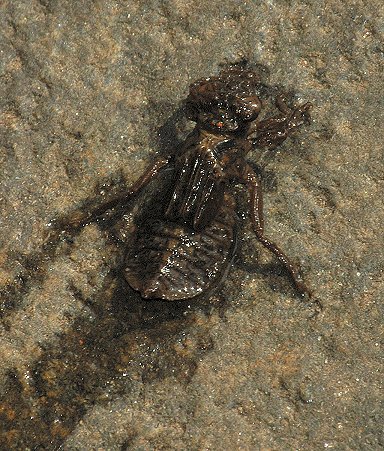 |
11:44. Nymph crawls out onto a rock. If you look closely you can see some tiny red mites on the head. |
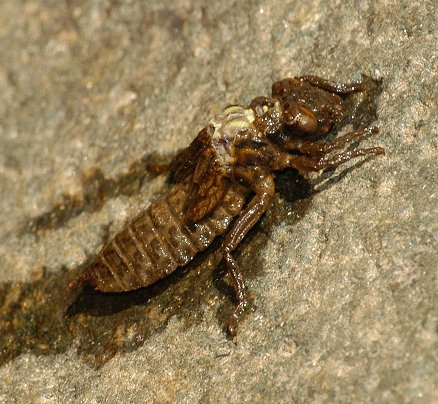 |
11:50. After drying for a few minutes, the skin splits just behind the nymph's eyes and you can see the top of the thorax of the adult starting to push through. |
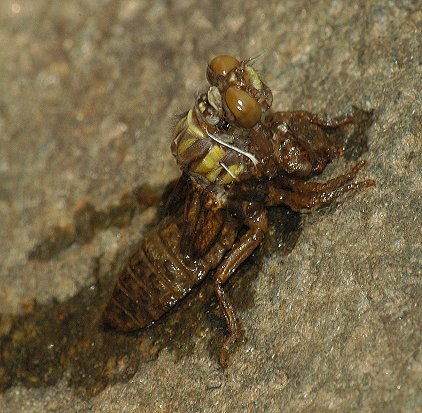 |
11:56. The head and thorax of the adult have pushed clear of the nymph's skin. |
|
|
|
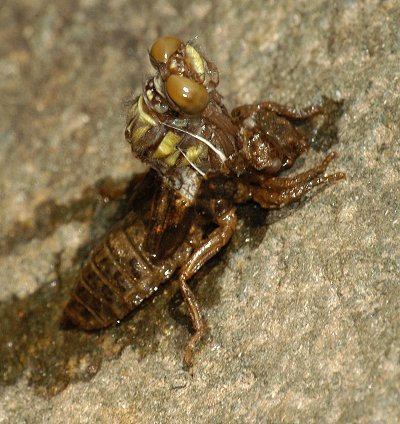 |
11:58. The adult continues to slowly push up, and you can now see legs. The adult is getting larger by pumping air into its new body. |
|
|
|
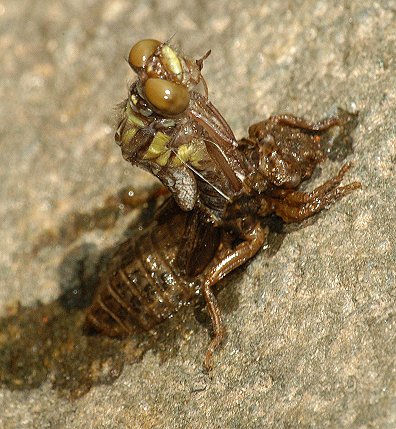 |
11:59. You can really see the shriveled beginning of the wings behind the thorax. |
|
|
|
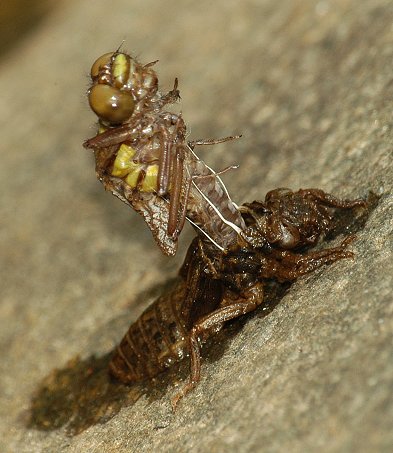 |
12:00. Still pushing up. The white tubes are breathing tubes from the nymph stage. |
|
|
|
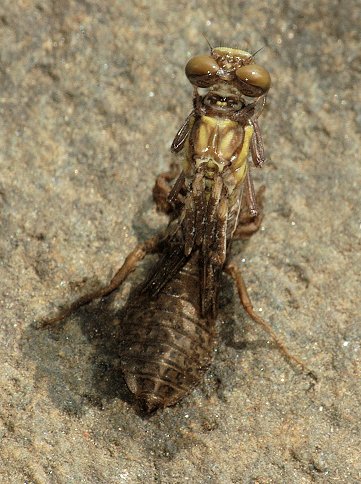 |
12:07. View from behind. |
|
|
|
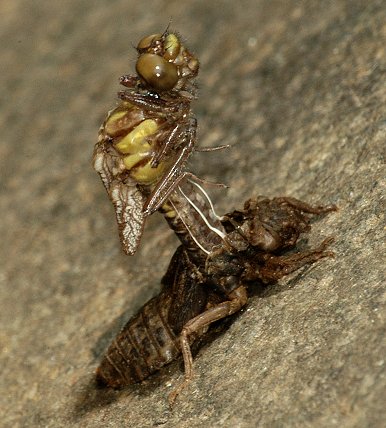 |
12:07. Same time as previous image, wings are starting to grow due to blood being pumped into them. |
|
|
|
 |
12:09:25 After over 10 minutes of pushing up, the body bends forward and the abdomen is pulled out, growing through more air pumped in. |
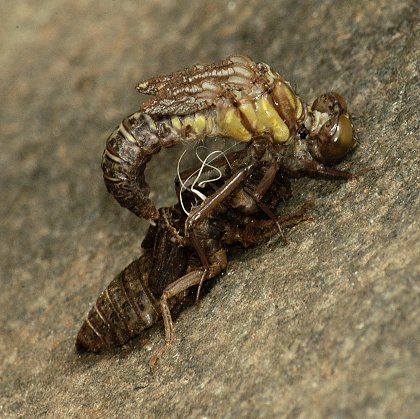 |
12:09:50 |
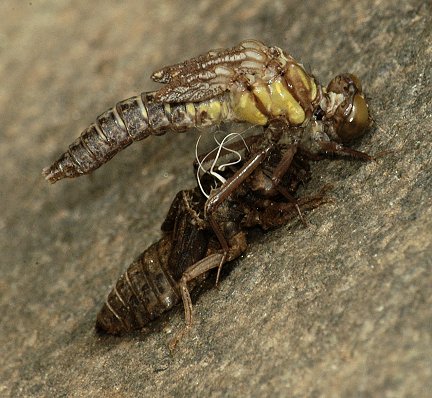 |
12:09:56 |
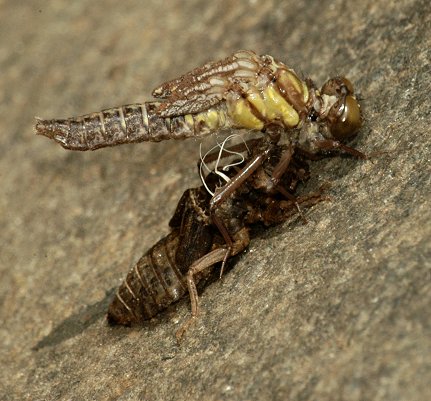 |
12:10:03 |
 |
12:11. The adult stands up for the first time and starts inflating the wings more with blood pressure. |
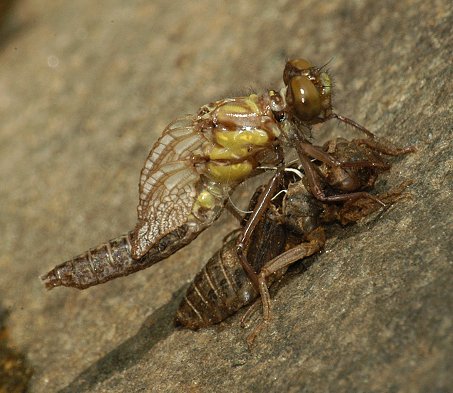 |
12:11:49. The wings extend fairly quickly. |
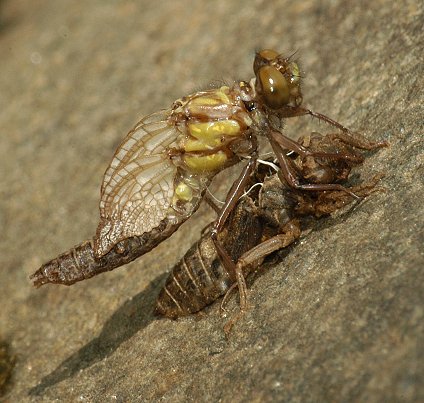 |
12:12:06 |
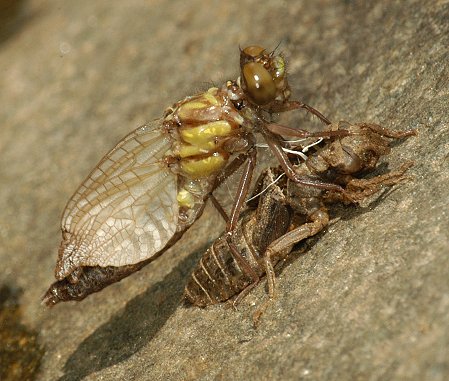 |
12:13. The wings are almost as long as the still-stubby abdomen. From here both parts grow almost equally. |
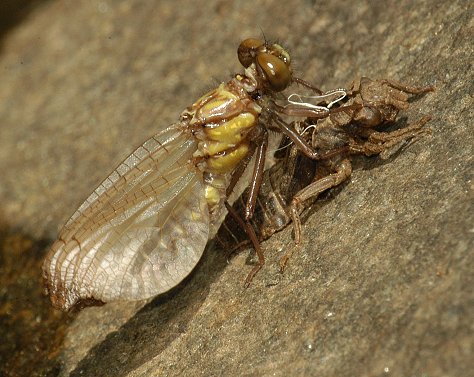 |
12:14 |
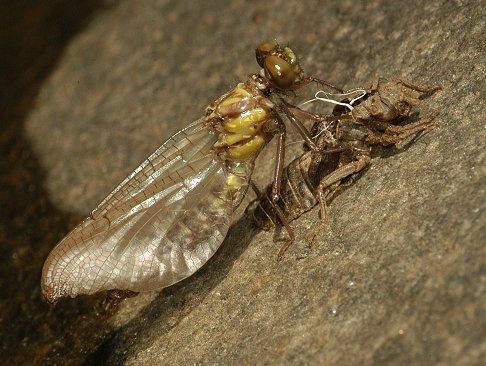 |
12:17 |
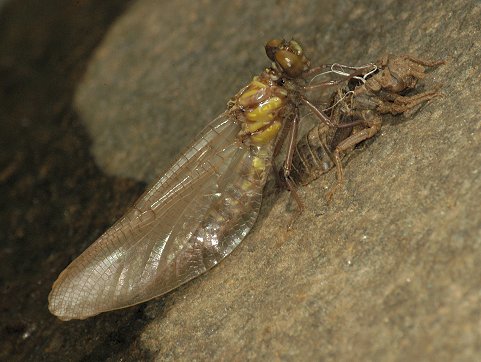 |
12:23. The wings are full size. This has taken about 13 minutes since the abdomen was pulled free of the nymph shell (now called an exuviae). Many species, including this one, can be identified just from the empty exuviae. |
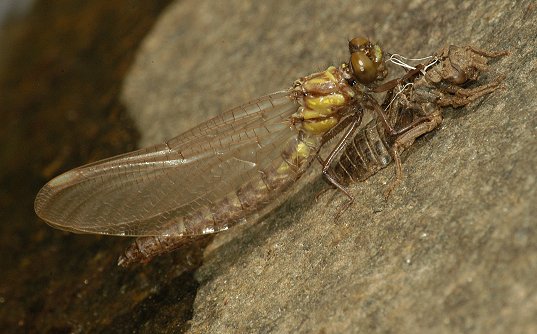 |
12:26. Now that the abdomen is full size, it is finally lifted off the ground. This whole sequence is very dangerous for the emerging dragonfly, as they are defenseless from predators and subject to wind or rain, either of which might send them back into the river, where they would now drown. |
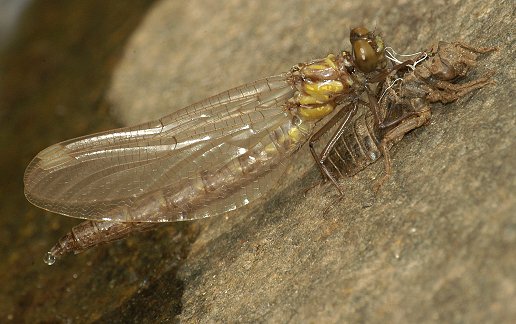 |
12:32. The adult spends about 20 minutes pumping water out of the abdomen, you can see a drop about to be expelled from the tip. |
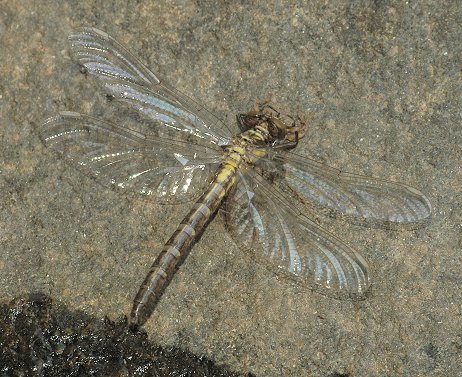 |
12:54. The wings were folded over the back until an instant before this shot was taken, and then they just snapped to a normal spread position. |
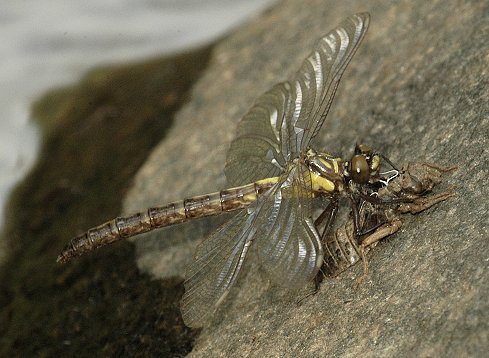 |
12:54. Same time, from the side. Note the very shiny wings, which identifies this as a very young adult, or "teneral." |
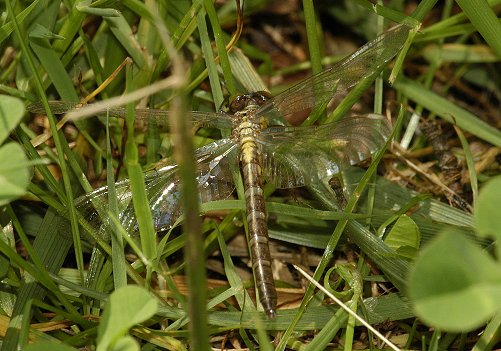 |
12:58. Just four minutes after the wings are spread, the adult takes its first flight to the safety of nearby vegetation. Not a graceful flight by any means, but after hardening for more time in this safe location it will become a powerful aerial predator. |

